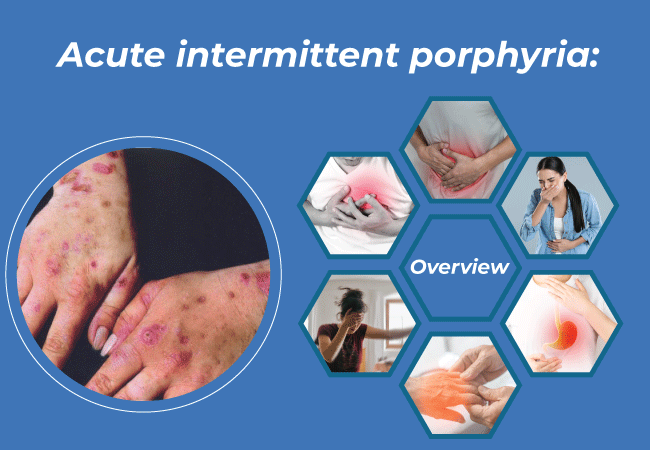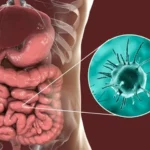Acute Intermittent Porphyria (AIP) is a rare genetic disorder that affects the production of heme, a critical component of hemoglobin. This condition is part of a group of disorders known as porphyrias, which are characterized by the accumulation of porphyrins and their precursors in the body. AIP is particularly notable for its episodic and potentially life-threatening symptoms. In this article, we delve into the intricacies of AIP, providing a detailed overview of its causes, symptoms, diagnosis, and treatment options.
Acute Intermittent Porphyria is an autosomal dominant disorder caused by mutations in the HMBS gene, which encodes the enzyme hydroxymethylbilane synthase. This enzyme plays a crucial role in the heme biosynthesis pathway. When its activity is reduced, the body accumulates toxic levels of porphyrin precursors, such as delta-aminolevulinic acid (ALA) and porphobilinogen (PBG). These compounds are responsible for the neurological and systemic symptoms associated with AIP.

Symptoms of Acute Intermittent Porphyria
The symptoms of AIP are often intermittent and can vary in severity. Common manifestations include:
- Severe Abdominal Pain: One of the hallmark symptoms, often mimicking surgical emergencies.
- Neurological Symptoms: Peripheral neuropathy, muscle weakness, and seizures.
- Psychiatric Symptoms: Anxiety, depression, and confusion.
- Gastrointestinal Disturbances: Nausea, vomiting, and constipation.
- Cardiovascular Symptoms: Tachycardia and hypertension.
These symptoms are typically triggered by factors such as hormonal changes, certain medications, fasting, or infections.
Diagnosing Acute Intermittent Porphyria
Accurate diagnosis of AIP is critical to managing the condition effectively. The diagnostic process includes:
- Clinical Evaluation: Assessing symptoms and medical history.
- Biochemical Testing: Measuring elevated levels of ALA and PBG in urine during acute attacks.
- Genetic Testing: Identifying mutations in the HMBS gene to confirm the diagnosis.
Early diagnosis is essential to prevent complications and initiate appropriate treatment.
Treatment and Management of Acute Intermittent Porphyria
The management of AIP focuses on alleviating symptoms, preventing attacks, and addressing underlying triggers. Key strategies include:
1. Acute Attack Management
- Intravenous Hemin: Reduces the production of porphyrin precursors.
- Glucose Infusion: Provides an alternative energy source to suppress ALA synthase activity.
- Symptomatic Relief: Pain management with opioids and anti-nausea medications.
2. Long-Term Management
- Avoiding Triggers: Identifying and avoiding medications, fasting, and other precipitating factors.
- Regular Monitoring: Periodic biochemical and clinical assessments.
- Genetic Counseling: Informing patients and families about the hereditary nature of AIP.
The Role of Genetics in Acute Intermittent Porphyria
AIP is inherited in an autosomal dominant pattern, meaning that a single copy of the mutated gene is sufficient to cause the disorder. However, not all individuals with the mutation develop symptoms, a phenomenon known as reduced penetrance. Genetic counseling is recommended for affected individuals and their families to understand the risks and implications.
Diagram: Heme Biosynthesis Pathway in AIP
mermaid
Copy
graph TD
A[Glycine + Succinyl-CoA] --> B[Delta-Aminolevulinic Acid (ALA)]
B --> C[Porphobilinogen (PBG)]
C --> D[Hydroxymethylbilane]
D --> E[Uroporphyrinogen III]
E --> F[Heme]
style B fill:#f9f,stroke:#333,stroke-width:2px
style C fill:#f9f,stroke:#333,stroke-width:2px
Figure 1: Disruption in the heme biosynthesis pathway due to HMBS enzyme deficiency in AIP.
Living with Acute Intermittent Porphyria
Patients with AIP can lead fulfilling lives with proper management. Key considerations include:
- Adhering to a balanced diet to avoid fasting.
- Maintaining a list of safe and unsafe medications.
- Building a support network with healthcare providers and patient organizations.
Acute Intermittent Porphyria is a complex and challenging condition that requires a multidisciplinary approach for effective management. By understanding its genetic basis, recognizing its symptoms, and implementing appropriate treatment strategies, patients can achieve better outcomes and improved quality of life.

